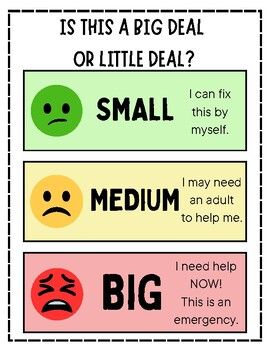In our daily lives, we often find ourselves faced with decisions that can be categorized as either big deals or little deals. Understanding the dynamics between these two types of decisions can illuminate not just our logical frameworks, but also the intricate emotional responses that accompany them. A decision that seems trivial to one person can be momentous to another; thus, grasping the nuances of this dichotomy is paramount for effective decision-making and personal growth.
At its core, a “big deal” is identified as a decision carrying significant weight. It’s the type that can alter the trajectory of one’s career, relationship, or even a foundational belief. In contrast, a “little deal” typically refers to choices of lesser consequence, such as what to wear or what to have for lunch. The interesting aspect of this distinction lies not merely in the outcomes, but also in the psychological and emotional underpinnings that shape our perceptions of these decisions.
One fascinating observation is how individuals can overemphasize the importance of smaller choices while simultaneously downplaying the gravity of larger ones. This paradox often arises from various factors, including fear of failure, decision fatigue, or simple procrastination. Take, for instance, the apprehension surrounding a job change. An individual may spend excruciating hours weighing the pros and cons, analyzing every potential outcome, while simultaneously deciding what to order from a restaurant with almost negligible contemplation. This phenomenon speaks to the complexity of our decision-making processes.
The mental gymnastics involved in distinguishing between big deals and little deals can be attributed to cognitive biases. One such bias is the “loss aversion” principle, wherein the pain of losing is felt more acutely than the pleasure of gaining. This can lead to an individual opting for comfort in minor decisions while agonizing over major life-altering choices. Here lies the enormity of our emotional states, which can hijack our rational faculties.
Another compelling component of decision dynamics is the perception of time. Big decisions often come with a protracted timeline, creating a sense of urgency or pressure. As the deadline looms, the weight of the decision can feel even more burdensome. Conversely, little deals tend to be executed with immediacy, as they do not carry the same lingering implications. This discrepancy in timing can further exacerbate the psychological struggle individuals experience when navigating these choices.
Furthermore, societal norms and cultural influences play a significant role in how individuals categorize their decisions. Culturally ingrained beliefs about success, failure, and the repercussions of our choices contribute to our valuation of decisions. For example, in some cultures, securing a prestigious job is considered a milestone that demands ample deliberation, while conversely, lifestyle choices such as fashion or food may be marginalized as inconsequential. Such frameworks can shape our intrinsic value systems and dictate how we approach both big deals and little deals.
Interestingly, the line between big and little deals can often blur. Once a decision is made, whether big or small, it takes on a life of its own and can yield unforeseen consequences. A seemingly benign choice, like attending a casual gathering, can lead to networking opportunities or the forging of vital relationships, while a critical life choice may not produce the anticipated outcome. Recognizing the fluidity in categorizing decisions can enrich our experiences and foster a more open-minded approach to the role our choices play in shaping our realities.
It can be valuable to adopt strategies that facilitate more effective decision-making, regardless of the scale of the decision. Embracing mindfulness can offer clarity during moments of ambiguity. By cultivating an awareness of the present, we can separate ourselves from the emotional turbulence that often clouds our judgment. Journaling thoughts related to decisions can also illuminate patterns in our rationalizations and emotional triggers.
Moreover, incorporating a framework of risk assessment can help streamline the decision-making process. This involves evaluating the potential benefits and drawbacks associated with a choice, irrespective of its size. A thorough risk analysis allows individuals to step back from their immediate emotional responses and weigh the factual implications of their decisions.
Finally, it’s crucial to recognize the potential of “little deals” to produce substantial impact over time. Small, consistent choices can lead to profound change when viewed through the lens of cumulative effect. For instance, a series of healthy dietary decisions can significantly transform one’s lifestyle and overall well-being. Conversely, avoidance of seemingly insignificant decisions can cascade into larger crises down the road.
In conclusion, the panorama of decision-making, framed through the lens of big deals versus little deals, reveals a rich tapestry of psychological, cultural, and temporal elements. Understanding how we navigate these distinct categories can empower us to approach our choices with clarity and purpose. By appreciating the depth of our seemingly mundane decisions and acknowledging the potential for profound consequences in our weighty choices, we create a more nuanced and empowered relationship with the decisions that shape our lives.
